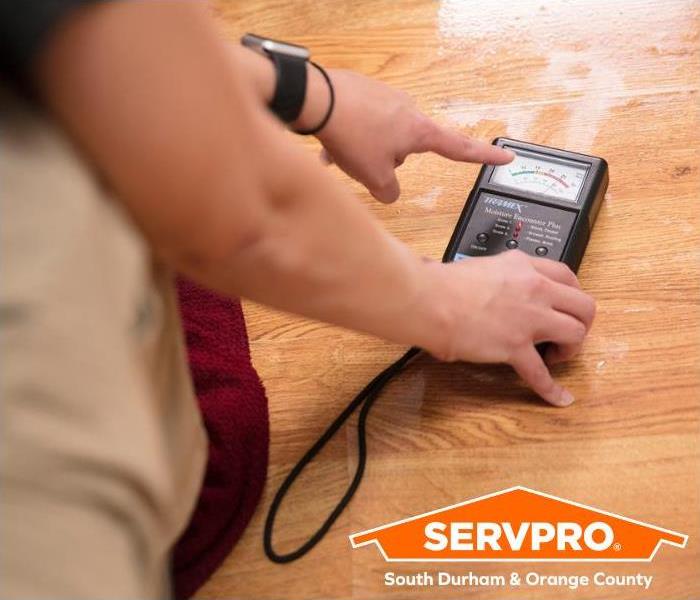Bound Water and Why Building Materials Must Be Removed to Dry
6/22/2022 (Permalink)
It is a common occurrence that clients will call with a need for mitigation service due to water damage caused from any number of sources, including a burst pipe, toilet supply line, ice maker line, overflowed washing machine or washing machine as well as storm related water damage. One common fact is that most water damage restoration will require the removal of some building materials due to bound water. Bound water is water that becomes trapped underneath flooring, inside walls or behind molding. If bound water is not removed it provides the perfect catalyst for secondary damage such as delamination of impacted walls, flooring, odor, and mold growth.
Professional remediation entails only the removal of areas that are impacted and can’t be dried effectively any other way. In some cases, only the molding will be removed to expose the wet drywall. Then holes will be placed in the drywall at the molding level so air movers can concentrate airflow behind the drywall to dry bound water. In cases where water gets underneath vinyl or laminate flooring, the flooring must be removed because the flooring itself acts as a vapor barrier preventing the drying process.
All professional remediators dry according to the standards set by the IICRC S500 otherwise known as the Institute of Inspection Cleaning and Restoration Certification. The standards set forth by the IICRC S500 are recognized by all insurance companies and their adjusters as it relates to water damage claims. Only impacted building materials supported by the IICRC S500 are removed by professional remediators such as SERVPRO of Chapel Hill and North Orange County.
If you have a water damage small or large call (919)245-0788 for fast, efficient service. Like our motto, “Like it never even happened.”






 24/7 Emergency Service
24/7 Emergency Service
